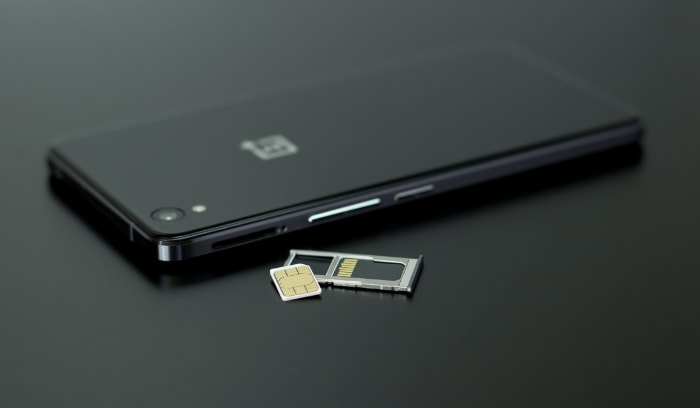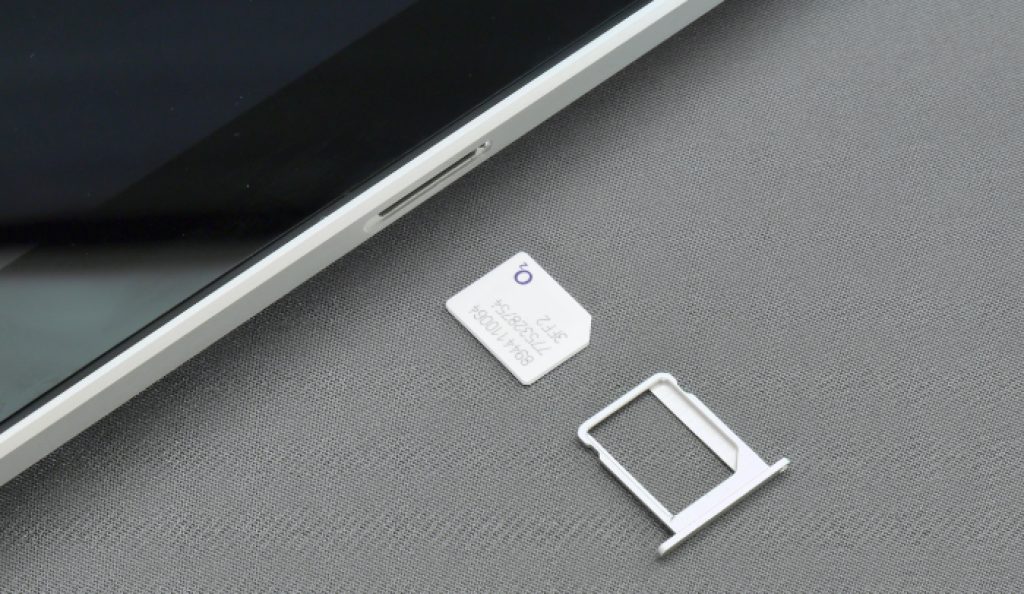What is a Universal Integrated Circuit Card (UICC)?

Mobile technology has evolved at an extraordinary pace, reshaping how we communicate, conduct business, and even how we pay for goods and services. Amidst the myriad of components and technologies that make our smartphones and other connected devices possible, the Universal Integrated Circuit Card (UICC) stands as a cornerstone.
This tiny piece of hardware is far more than a passport enabling your device to connect to cellular networks; it’s a hub of secure functionalities and a lynchpin for modern digital identities.
What is Universal Integrated Circuit Card (UICC)?
The Universal Integrated Circuit Card, commonly known as UICC, is a critical component in mobile telecommunications. It’s not just a conduit for connecting to cellular networks but also a sophisticated piece of hardware that serves multiple functions, including secure data storage and multi-application support.
Definition of UICC
The UICC is a smart card that resides in mobile devices like smartphones, tablets, and laptops. It serves as the technical foundation for various types of subscriber identity modules (SIMs), including the traditional SIM, USIM in UMTS and LTE networks, and ISIM in IMS networks.
Unlike standard SIM cards, UICCs have a much broader application and are designed to operate in both 3G and 4G environments, with forward compatibility for 5G networks.
Historical Context
Developed to supersede the traditional SIM card, the UICC came into existence to meet the expanding requirements of the mobile ecosystem. It is a result of ongoing standardization efforts led by the European Telecommunications Standards Institute (ETSI) and 3rd Generation Partnership Project (3GPP).
The objective was to create a more secure and flexible technology that could adapt to advancements in mobile telecommunications.
Components and Architecture
The UICC is comprised of both hardware and software components that work in harmony to deliver a range of services and features.
Hardware Components
The primary hardware elements include a microcontroller and memory storage. The microcontroller performs the computational tasks, while the memory storage houses the operating system, applications, and user data.
Software Components
The software on a UICC includes its operating system and various applications that manage tasks like authentication, data storage, and secure communications. The architecture supports multiple applications, enabling the UICC to be more than just a tool for mobile connectivity.
Functions and Features
A UICC serves multiple purposes, which extend beyond simply enabling mobile connectivity.
Subscriber Identification and Authentication
One of the primary functions is to securely store the International Mobile Subscriber Identity (IMSI) and keys for encryption to secure the user’s communication.
Secure Data Storage and Management
The UICC provides secure storage for important data such as your contact list and SMS history. It also allows secure access to web services and enables secure financial transactions via mobile.
Over-the-Air Updates and Configuration
UICCs can receive Over-the-Air (OTA) updates, allowing mobile operators to send updates to your device without requiring physical access to the card.
Multi-Application Support
Modern UICCs can host multiple applications, which means they are capable of supporting various services such as mobile television, Voice over LTE (VoLTE), and even non-telecommunications applications like contactless payments and public transportation tickets.
Role in Different Technologies
UICC has a versatile role in the technology ecosystem.
UICC in 4G LTE Networks
In a 4G LTE environment, the UICC holds a USIM application that manages the subscriber’s profile and ensures secure data transmission.
Role in 5G Technology
With 5G, UICC is expected to take on more functionalities, such as handling more complex authentication algorithms and supporting faster data speeds.
Adaptability in IoT Environments
IoT devices often require secure, reliable communication. UICCs can offer this by providing robust authentication and secure storage features, making them an ideal choice for smart devices beyond mobile phones.
Historical Evolution of UICC
The history of the Universal Integrated Circuit Card (UICC) is a testament to how mobile technology has adapted to meet ever-increasing demands for security, functionality, and global interoperability.
Origins and Initial Developments
Before the advent of UICCs, traditional SIM (Subscriber Identity Module) cards were the standard for mobile identification and authentication. Initially, these SIM cards operated in 2G (GSM) networks and offered limited functionalities, primarily focusing on secure subscriber authentication.
However, as mobile technology advanced into 3G and 4G, the need for a more sophisticated and secure form of subscriber identification became apparent.
Transition from SIM to UICC
With the rollout of 3G and 4G networks, the capabilities of traditional SIM cards were becoming increasingly limited. The industry needed a solution that could not only handle enhanced security protocols but also support multiple applications and services.
This led to the development and adoption of the UICC, which was designed to work seamlessly across 3G and 4G networks, with forward compatibility for emerging technologies like 5G.
Standardization Efforts
As the UICC began to gain prominence, there was a pressing need to standardize its functionalities to ensure global interoperability. Regulatory bodies like the European Telecommunications Standards Institute (ETSI) and the 3rd Generation Partnership Project (3GPP) took the lead in these standardization processes.
These initiatives resulted in a universally accepted architecture and set of protocols for UICCs, ensuring that they could function consistently across different networks and regions.
Role in Advanced Mobile Technologies
The introduction of smartphones and other smart devices generated a need for UICCs to support a range of new services and functionalities. This included everything from contactless payments to secure access to web services.
As a result, modern UICCs have become more versatile, supporting multiple applications and not just serving as a tool for subscriber authentication and mobile connectivity.
UICC and IoT
The emergence of the Internet of Things (IoT) presented yet another avenue for UICCs to demonstrate their adaptability. The secure and reliable communication features of UICC make it a suitable choice for IoT devices, providing a standardized approach to connectivity and data management.
Looking Towards 5G and Beyond
As the world stands on the brink of a 5G revolution, UICCs are expected to play an essential role. They are geared to handle more complex algorithms for authentication and support faster data transmission rates, thereby continuing to evolve in sync with the latest technological advancements.
Components and Architecture of UICC

The Universal Integrated Circuit Card, commonly referred to as UICC, serves as a foundational element in mobile devices for secure communications and data storage. Its design consists of multiple hardware and software components intricately woven together to offer a plethora of functions and features.
Hardware Elements
Microcontroller
At the heart of a UICC is the microcontroller, which is responsible for executing instructions, performing calculations, and managing data flow. This component essentially functions as the brain of the UICC, coordinating all tasks and processes.
Memory Storage
UICCs also feature various types of memory storage units such as ROM (Read-Only Memory), RAM (Random-Access Memory), and EEPROM (Electrically Erasable Programmable Read-Only Memory). These memory units house the operating system, applications, and user data.
While ROM is usually used for storing the operating system, RAM is for temporary data storage, and EEPROM is for user data and applications.
Software Components
Operating System
The UICC comes with a built-in operating system that manages the hardware and provides an interface for various software applications. The operating system handles tasks like file management, input/output processing, and multitasking.
Applications
UICCs can host multiple applications, extending their functionality beyond just subscriber authentication and secure data storage. Applications on a UICC can range from those related to mobile connectivity, such as a USIM application in a 4G LTE network, to others like contactless payment systems.
Logical Architecture
File System Hierarchy
The UICC has a hierarchical file system that includes a Master File (MF), Dedicated Files (DFs), and Elementary Files (EFs). The Master File acts as the root directory, while Dedicated Files serve as subdirectories.
Elementary Files store actual data. This hierarchical structure aids in organizing and accessing data efficiently.
Access Control
Security is a paramount concern for UICC, and access control mechanisms are put in place to safeguard data and functionalities. Various levels of authentication checks are applied depending on the sensitivity of the data or operation involved.
These checks can include Personal Identification Numbers (PINs) or advanced cryptographic methods.
Multi-Application Environment
One of the distinguishing features of UICCs is their ability to host and run multiple applications simultaneously. This not only makes them versatile but also future-proof, as they can be updated or reconfigured to support new services or technologies as they emerge.
Functions and Capabilities of UICC
While the Universal Integrated Circuit Card, or UICC, may seem like a simple piece of hardware, its functionalities and capabilities are anything but trivial. The UICC serves as the linchpin for secure communications and data storage in mobile devices.
Secure Identification and Authentication
Subscriber Information
One of the most basic yet crucial roles of a UICC is to securely store subscriber information. The card holds details like the International Mobile Subscriber Identity (IMSI), which serves as a unique identifier for each user.
Encryption Keys
In addition to storing subscriber information, the UICC also securely holds encryption keys that help in the secure transmission of data. These keys are used to encrypt and decrypt messages and ensure that the data transmission is only accessible to the intended recipient.
Data Storage and Management
Contact List and Messages
UICCs provide a secure storage option for important data, including your contact list and text messages. This ensures that your data is not only readily accessible but also protected from unauthorized access.
Secure Transactions
For financial transactions via mobile, UICC offers an additional layer of security by storing authentication and authorization credentials. This facilitates secure mobile payments and transfers.
Connectivity Features
Network Selection
UICCs are intelligent enough to facilitate automatic network selection when you are roaming. They contain a list of preferred networks and will automatically connect your device to the most suitable available network.
Over-the-Air Updates
The ability to receive Over-the-Air (OTA) updates is another significant feature of UICCs. This means that mobile operators can update settings or even install new services remotely, without requiring physical access to the device.
Multiple Application Support
Versatile Application Hosting
A modern UICC is not limited to telecommunication services alone; it can host multiple applications. This multiplicity of functionalities allows UICCs to be used in services like mobile television, Voice over LTE (VoLTE), and even non-telecommunications services like contactless payments and ticketing for public transport.
Dynamic Management
One of the standout features of the UICC’s multi-application environment is its dynamic management capability. Applications can be added, removed, or updated dynamically, offering a level of flexibility and future-proofing for users and service providers alike.
Adaptability and Future-Readiness
5G Compatibility
As we move toward a 5G world, UICCs are already being designed to support this next generation of cellular technology. They are equipped to handle complex authentication algorithms and faster data transmission rates.
IoT Use Cases
The secure and reliable communication features inherent in UICC make it a good fit for Internet of Things (IoT) devices. UICCs can provide robust authentication and secure data storage capabilities for a wide range of connected devices beyond just mobile phones.
UICC in Different Technologies

The Universal Integrated Circuit Card (UICC) has proven its versatility by adapting to and becoming an integral part of various technologies over the years. Far from being confined to basic mobile phone services, the UICC has found applications in diverse fields such as IoT, 5G, and secure transactions.
Role in Cellular Networks
2G and 3G Networks
In the days of 2G and 3G, UICC cards primarily functioned as SIM cards focused on storing subscriber information for mobile connectivity. These cards were essential for encryption and authentication tasks.
4G LTE and VoLTE
With the advent of 4G and VoLTE, UICCs evolved to support high-speed data transmission and voice over data services. They became even more secure and offered more functionalities, thanks to additional memory and computational power.
UICC in 5G
The emerging 5G technology promises a paradigm shift in network capabilities, and UICCs are being engineered to keep pace. They are expected to manage more complex security algorithms and facilitate low-latency, high-throughput data transactions that 5G aims to deliver.
Internet of Things (IoT)
IoT Devices
UICCs play a significant role in the Internet of Things by providing secure authentication and data storage for connected devices. From smart home gadgets to industrial sensors, UICCs offer a standardized, secure method for these devices to connect to the network.
Industrial IoT
In an industrial setting, UICC’s ability to provide secure, reliable communication makes it a suitable choice for applications that require high levels of data integrity and security, such as manufacturing automation and health monitoring systems.
Secure Transactions
Mobile Payments
Contactless payments and mobile wallets also benefit from UICC technology. By storing secure encryption keys and facilitating secure communication, UICCs add an additional layer of security to financial transactions.
Digital Identity
In an increasingly digital world, the concept of digital identity is gaining importance. UICCs can securely store digital IDs and facilitate secure authentication, making them crucial for services like e-government, online voting, and secure email communication.
Automotive and Transportation
Connected Cars
In modern vehicles, connected services like real-time navigation, traffic updates, and emergency response services are becoming standard. UICCs can facilitate these services by providing secure, reliable connectivity.
Public Transportation
For public transit systems, UICCs can hold tickets and facilitate contactless entry, making commuting more convenient and secure for the public.
The Process of Issuing a UICC
The Universal Integrated Circuit Card (UICC) is an essential component in mobile devices and other communication systems. Its issuance is not a mere handover of a physical card but involves several steps that ensure the security and functionality of the card for the end-user.
Preliminary Steps
Application and Verification
The process typically starts when a customer approaches a mobile operator or service provider expressing the need for a new UICC, either for a new connection or as a replacement. The operator will collect relevant details from the applicant and perform necessary background checks to verify the authenticity of the request.
Data Preparation
Once the application is verified, the next step involves preparing the data that will be stored on the UICC. This includes subscriber details, encryption keys, and other relevant configuration information.
The data is encrypted to ensure that it remains confidential and secure during the personalization process.
UICC Personalization
Data Writing
In the personalization phase, the encrypted data prepared in the earlier step is written onto the UICC. Advanced machinery is employed to ensure the accurate transfer of data onto each card, with no room for errors.
Quality Assurance
After the data writing process, each UICC undergoes a series of tests to ensure that it functions correctly. These tests check for data accuracy, security features, and the overall functionality of the card.
Packaging and Dispatch
Once the UICC passes all quality checks, it is packaged, typically with accompanying documentation. The package often includes instructions for the end-user on how to activate the UICC, set up PINs, and other relevant details.
Activation Process
Initial Activation
Upon receiving the UICC, the customer will need to insert it into their device and follow the provided instructions for activation. This may involve contacting the service provider or following an automated setup process.
Network Authentication
When the device is powered on with the new UICC for the first time, it will attempt to connect to the network. The UICC will communicate with the network, sharing its credentials and ensuring it’s authorized to access the services.
Configuration Updates
Post activation, the UICC may receive Over-the-Air (OTA) configuration updates. These updates fine-tune the settings on the UICC to optimize its performance and may also add new services or features.
Ongoing Maintenance
Service providers maintain an active relationship with the UICC even after issuance. Regular OTA updates are sent to keep the card’s software current, ensure security patches are applied, and occasionally add new functionalities.
Conclusion
UICC issuance is a complex yet vital procedure, ensuring secure and efficient mobile communications for users worldwide. From the meticulous steps of application verification and data preparation to personalization and post-issuance maintenance, every phase underscores the commitment to data integrity, security, and user experience.
The multi-faceted nature of this process highlights the importance of the UICC in modern communication systems, serving as a linchpin for both connectivity and security. Through this exploration, we gain a comprehensive view of the diligence and precision involved in bringing a UICC from the drawing board to a user’s device, reinforcing its pivotal role in our digital age.


